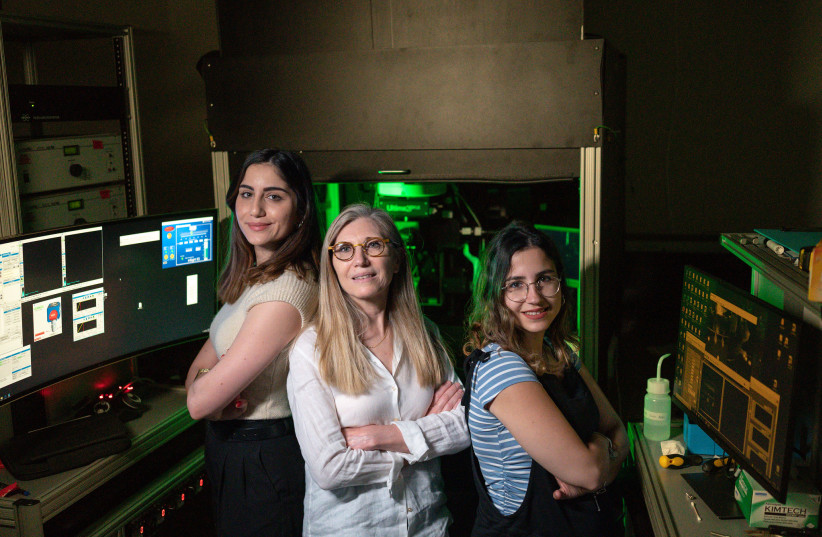Thanks to the brain, human bodies move from the time they are in the womb and throughout life, allowing them to interact with their surroundings. We move our hands to touch, grasp objects and gesture and move our lips to smile or speak. We move our eyes to see and our legs to walk, jump and dance.
Scientists have not known until now how this amazing organ in our heads remembers this wide range of motions and learns new ones, or how it calculates how to move so we can take hold of a glass of water without dropping it or failing to grab it.
The study
Prof. Jackie Schiller from the Rappaport Faculty of Medicine at the Technion-Israel Institute of Technology in Haifa and her team focused on the brain at a single-neuron level to explain this mystery. They found that computation occurs not just in the interaction among nerve cells but also within each individual neuron.
They discovered that each of these microscopic cells is not a simple switch, but rather a complicated calculating machine like a tiny biological computer. Their discovery has just been published in the prestigious journal Science under the title “Dynamic compartmental computations in tuft dendrites of layer 5 neurons during motor behavior.”

What the findings mean
This revelation has the potential not only to increase our understanding of how the brain works but also to shed additional light on serious neurological conditions ranging from Parkinson’s disease to autism.
It is also expected to advance machine learning, which is based on the idea that machines are able to learn and adapt through experience, and offer inspiration for new “architectures” – the various layers involved in the machine-learning cycle that turns raw data into training for making decisions.

How does the brain work?
Movement is controlled by the brain’s primary motor cortex where scientists are able to pinpoint exactly which neuron or neurons fire at any given moment to produce the movement we see. Schiller’s team was the first to get even closer, examining the activity not of the whole neuron as a single unit but of its parts.
Every neuron has branched extensions called dendrites that are in close contact with the terminals (called axons) of other nerve cells, allowing communication between them. A signal travels from the dendrites to the cell’s body and is then transferred onwards through the axon. The number and structure of dendrites vary greatly among nerve cells, as the crown of one tree differs from that of another.
The particular neurons on which the Technion team focused were the largest pyramidal neurons of the cortex. These cells, known to be involved significantly in movement, have a large dendritic tree with many branches, sub-branches and sub-sub-branches.
The scientists discovered that these branches don’t merely pass information onward; each sub-sub-branch performs a calculation on the information it receives and passes the result to the bigger sub-branch. The sub-branch then performs a calculation on the information received from all its subsidiaries and passes that on.
In addition, multiple dendritic branchlets can interact with each another to make their combined computational product more intense, with the result of a complex calculation performed within each individual neuron. For the first time, the Technion team showed that the neuron is compartmentalized and that its branches perform calculations independently.
“We used to think of each neuron as a sort of whistle that either toots or doesn’t. Instead, we are looking at a piano whose keys can be struck simultaneously or in sequence, producing an infinity of different tunes.”
Prof. Jackie Schiller from the Rappaport Faculty of Medicine at the Technion-Israel Institute of Technology in Haifa
“We used to think of each neuron as a sort of whistle that either toots or doesn’t. Instead, we are looking at a piano whose keys can be struck simultaneously or in sequence, producing an infinity of different tunes.”
Prof. Jackie Schiller from the Rappaport Faculty of Medicine at the Technion-Israel Institute of Technology in Haifa.
This complex symphony playing in our brains is what enables us to learn and perform an infinity of different, complex and precise movements, she added.
Several kinds of neurodegenerative and neurodevelopmental disorders are likely to be linked to changes in the neuron’s ability to process data. In Parkinson’s disease, for example, it has been observed that the dendritic tree undergoes anatomical and physiological changes. In light of the new discoveries by the Technion team, it is clear that as a result of these changes, the neuron’s ability to perform parallel computation is reduced.
In autism, it may be that the excitability of the dendritic branches is altered, resulting in the numerous effects associated with the condition. This new understanding of how neurons work opens new research pathways for better treatment of these and other diseases.
Their findings can also serve as an inspiration for the machine-learning community. Deep neural networks try to create software that learns and functions somewhat like a human brain, but they are primitive compared to a living brain. A better understanding of how our brain actually works can help in designing more complex neural networks, enabling them to perform more complex tasks.
This study was led by two of Schiller’s M.D.-Ph.D. candidate students Yara Otor and Shay Achvat, who contributed equally to the research. The team also included postdoctoral fellow Nate Cermak (now a neuro engineer) and doctoral student Hadas Benisty, as well as three collaborators – Technion Profs. Omri Barak, Yitzhak Schiller and Alon Poleg-Polsky.
